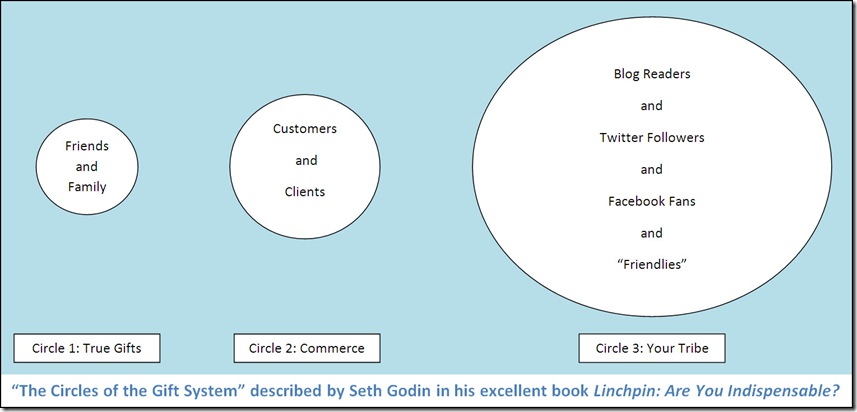Commendable Comments (Part 7)
/Blogging has made the digital version of my world much smaller and allowed my writing to reach a much larger audience than would otherwise be possible. Although I am truly grateful to all of my readers, I am most grateful to my commenting readers.
Since its inception over a year ago, this has been an ongoing series for expressing my gratitude to my readers for their truly commendable comments, which greatly improve the quality of my blog posts.
Commendable Comments
On Do you enjoy writing?, Corinna Martinez commented:
“To be literate, a person of letters, means one must occasionally write letters by hand.
The connection between brain and hand cannot be overlooked as a key component to learning. It is by the very fact that it is labor intensive and requires thought that we are able to learn concepts and care thought into action.
One key feels the same as another and if the keyboard is changed then even the positioning of fingers while typing will have no significance. My bread and butter is computers but all in the name of communications, understanding and resolution of problems plaguing people/organizations.
And yet, I will never be too far into a computer to neglect to write a note or letter to a loved one. While I don’t journal, and some say that writing a blog is like journaling online, I love mixing and matching even searching for the perfect word or turn of phrase.
Although a certain number of simians may recreate something legible on machines, Shakespeare or literature of the level to inspire and move it will not be.
The pen is mightier than the sword—from as earthshaking as the downfall of nations to as simple as my having gotten jobs after handwriting simple thank you notes.
Unfortunately, it may go the way of the sword and be kept in glass cases instead of employed in its noblest and most dangerous task—wielded by masters of mind and purpose.”
On The Prince of Data Governance, Jarrett Goldfedder commented:
“Politics and self-interest are rarely addressed factors in principles of data governance, yet are such a strong component during some high-profile implementations, that data governance truly does need to be treated as an art rather than a science.
Data teams should have principles and policies to follow, but these can be easily overshadowed by decisions made from a few executives promoting their own agendas. Somehow, built into the existing theories of data governance, we should consider how to handle these political influences using some measure of accountability that all team members—stakeholders included—need to have.”
On Jack Bauer and Enforcing Data Governance Policies, Jill Wanless commented:
“Data Governance enforcement is a combination of straightforward and logical activities that when implemented correctly will help you achieve compliance, and ensure the success of your program. I would emphasize that they ALL (Documentation, Communication, Metrics, Remediation, Refinement) need to be part of your overall program, as doing one or a few without the others will lead to increased risk of failure.
My favorite? Tough to choose. The metrics are key, as are the documentation, remediation and refinement. But to me they all depend upon good communications. If you don’t communicate your policies, metrics, risks, issues, challenges, work underway, etc., you will fail! I have seen instances where policies have been established, yet they weren’t followed for the simple fact that people were unaware they existed.”
On Is your data complete and accurate, but useless to your business?, Dylan Jones commented:
“This sparks an episode I had a few years ago with an engineering services company in the UK.
I ran a management workshop showing a lot of the issues we had uncovered. As we were walking through a dashboard of all the findings one of the directors shouted out that the 20% completeness stats for a piece of engineering installation data was wrong, she had received no reports of missing data.
I drilled into the raw data and sure enough we found that 80% of the data was incomplete.
She was furious and demanded that site visits be carried out and engineers should be incentivized (i.e., punished!) in order to maintain this information.
What was interesting is that the data went back many years so I posed the question:
‘Has your decision-making ability been impeded by this lack of information?’
What followed was a lengthy debate, but the outcome was NO, it had little effect on operations or strategic decision making.
The company could have invested considerable amounts of time and money in maintaining this information but the benefits would have been marginal.
One of the most important dimensions to add to any data quality assessment is USEFULNESS, I use that as a weight to reduce the impact of other dimensions. To extend your debate further, data may be hopelessly inaccurate and incomplete, but if it’s of no use, then let’s take it out of the equation.”
On Is your data complete and accurate, but useless to your business?, Gordon Hamilton commented:
“Data Quality dimensions that track a data set’s significance to the Business such as Relevance or Impact could help keep the care and feeding efforts for each data set in ratio to their importance to the Business.
I think you are suggesting that the Business’s strategic/tactical objectives should be used to self-assess and even prune data quality management efforts, in order to keep them aligned with the Business rather than letting them have an independent life of their own.
I wonder if all business activities could use a self-assessment metric built in to their processing so that they can realign to reality. In the low levels of biology this is sometimes referred to as a ‘suicide gene’ that lets a cell decide when it is no longer needed. Suicide is such a strong term though, maybe it could be called an: annual review to realign efforts to organizational goals gene.”
On Is your data complete and accurate, but useless to your business?, Winston Chen commented:
“A particularly nasty problem in data management is that data created for one purpose gets used for another. Often, the people who use the data don't have a choice. It’s the only data available!
And when the same piece of data is used for multiple purposes, it gets even tougher. As you said, completeness and accuracy has a context: the same piece of data could be good for one purpose and useless for another.
A major goal of data governance is to define and enforce policies that aligns how data is created with how data is used. And if conflicts arise—they surely will—there’s a mechanism for resolving them.”
On Data Quality and the Cupertino Effect, Marty Moseley commented:
“I usually separate those out by saying that validity is a binary measurement of whether or not a value is correct or incorrect within a certain context, whereas accuracy is a measurement of the valid value’s ‘correctness’ within the context of the other data surrounding it and/or the processes operating upon it.
So, validity answers the question: ‘Is ZW a valid country code?’ and the answer would (currently) be ‘Yes, on the African continent, or perhaps on planet Earth.’
Accuracy answers the question: ‘Is it 2.5 degrees Celsius today in Redding, California?’
To which the answer would measure several things: is 2.5 degrees Celsius a valid temperature for Redding, CA? (yes it is), is it probable this time of year? (no, it has never been nearly that cold on this date), and are there any weather anomalies noted that might recommend that 2.5C is valid for Redding today? (no, there are not). So even though 2.5C is a valid air temperature, Redding, CA is a valid city and state combination, and 2.5C is valid for Redding in some parts of the year, that temperature has never been seen in Redding on July 15th and therefore it is probably not accurate.
Another ‘accuracy’ use case is one I’ve run into before: Is it accurate that Customer A purchased $15,049.00 in <product> on order 123 on <this date>?
To answer this, you may look at the average order size for this product (in quantity and overall price), the average order sizes from Customer A (in quantity ordered and monetary value), any promotions that offer such pricing deals, etc.
Given that the normal credit card charges for this customer are in the $50.00 to $150.00 range, and that the products ordered are on average $10.00 to $30.00, and that even the best customers normally do not order more than $200, and that there has never been a single order from this type of customer for this amount, then it is highly unlikely that a purchase of this size is accurate.”
On Do you believe in Magic (Quadrants)?, Len Dubois commented:
“I believe Magic Quadrants (MQ) are a tool that clients of Gartner, and any one else that can get their hands on them, use as one data point in their decision making process.
Analytic reports, like any other data point, are as useful or dangerous as the user wants/needs it to be. From a buyer’s perspective, a MQ can be used for lots of things:
1. To validate a market
2. To identify vendors in the marketplace
3. To identify minimum qualifications in terms of features and functionality
4. To identify trends
5. To determine a company’s viability
6. To justify one’s choice of a vendor
7. To justify value of a purchase
8. Worse case scenario: defends one choice of a failed selection
9. To demonstrate business value of a technologyI also believe they use the analysts, Ted and Andy in this instance, as a sounding board to validate what they believe or learned from other data points, i.e. references, white papers, demos, friends, colleagues, etc.
In the final analysis though, I know that clients usually make their selection based on many things, the MQ included. One of the most important decision points is the relationship they have with a vendor or the one they believe they are going to be able to develop with a new vendor—and no MQ is going to tell you that.”
Thank You
Thank you all for your comments. Your feedback is greatly appreciated—and truly is the best part of my blogging experience.
This entry in the series highlighted commendable comments on OCDQ Blog posts published in May, June, and July of 2010.
Since there have been so many commendable comments, please don’t be offended if one of your comments wasn’t featured.
Please keep on commenting and stay tuned for future entries in the series.
Related Posts










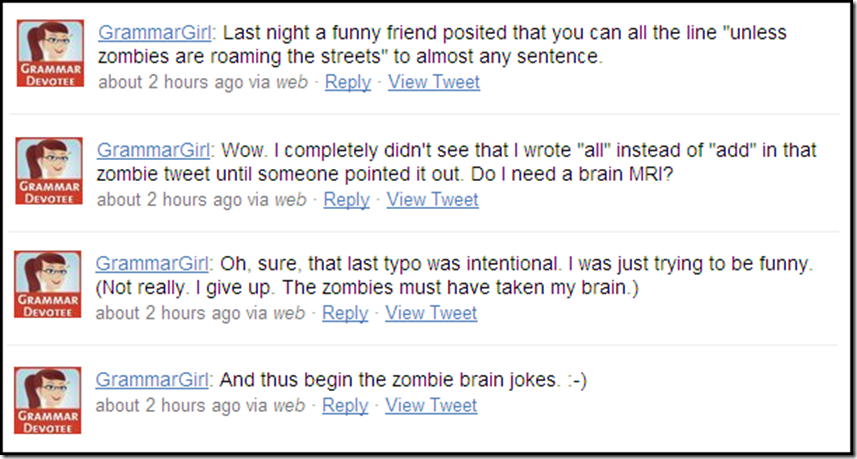








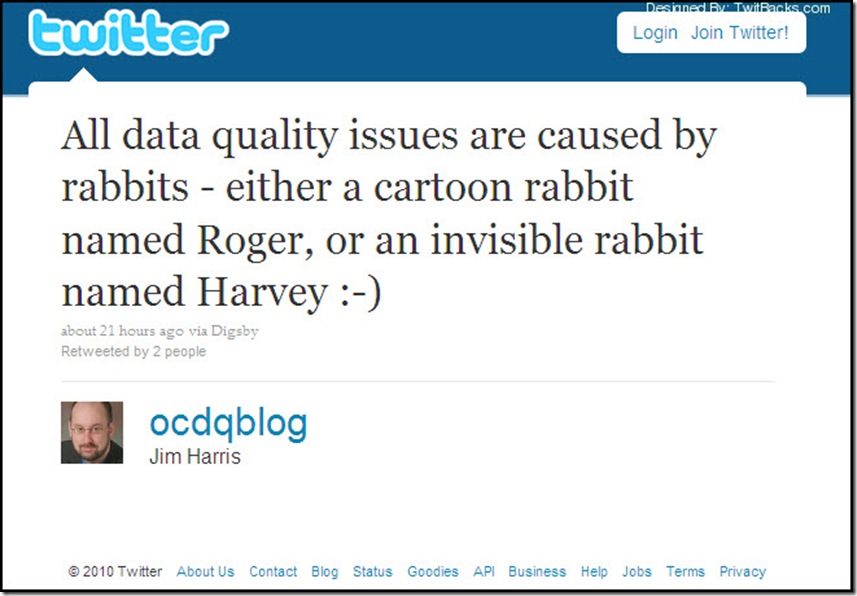


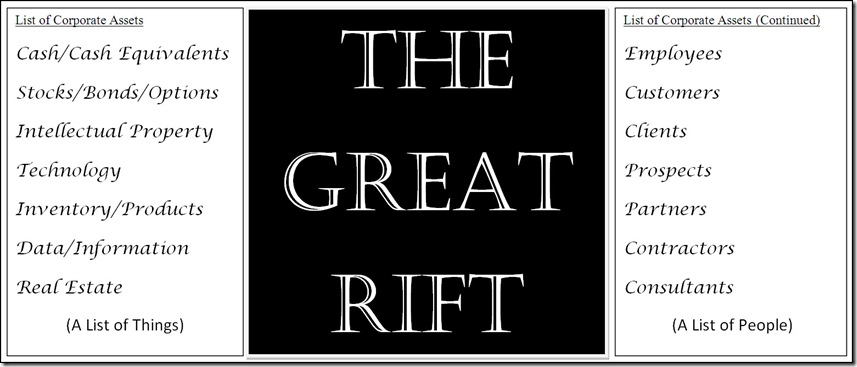
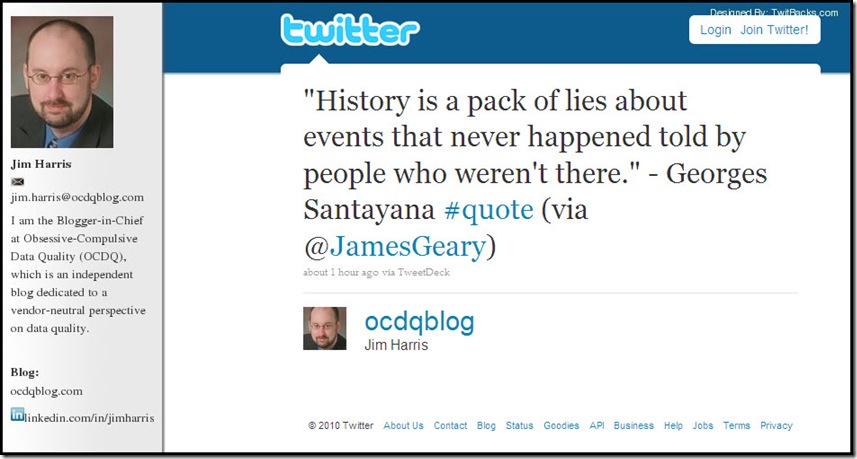

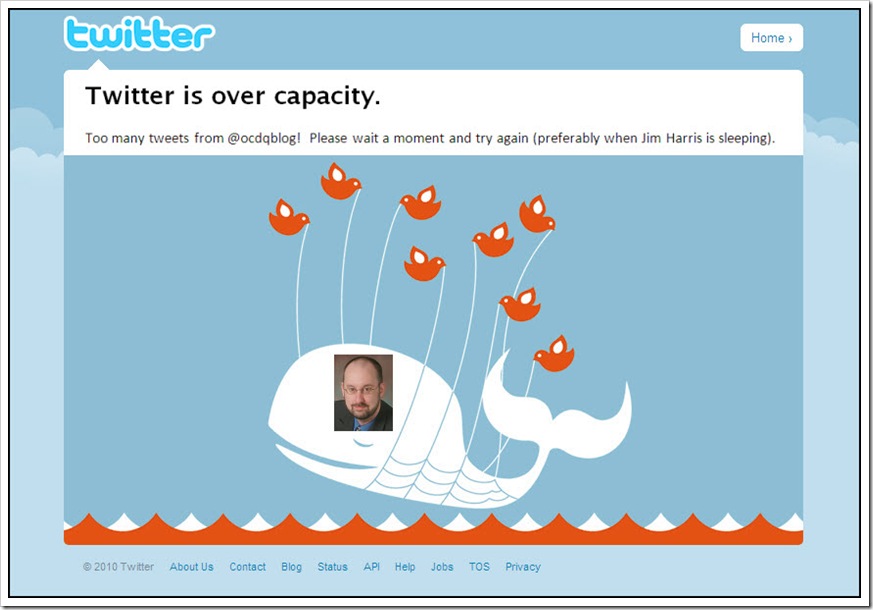

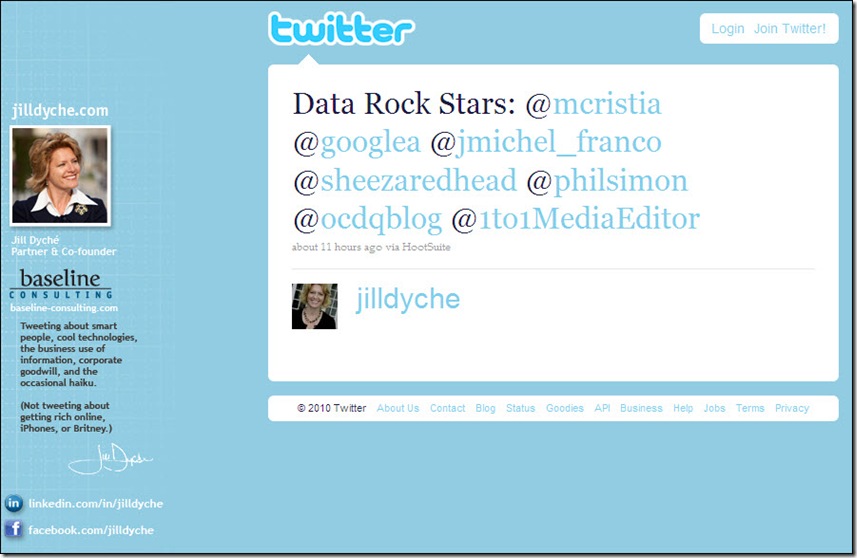

 Jill Dyché –
Jill Dyché –  Elizabeth Glagowski –
Elizabeth Glagowski –  Jean-Michel Franco –
Jean-Michel Franco –  Giedre Aleknonyte –
Giedre Aleknonyte –  Michael W Cristiani –
Michael W Cristiani –  Phil Simon –
Phil Simon –  Jill Wanless –
Jill Wanless –  Jim Harris –
Jim Harris – 